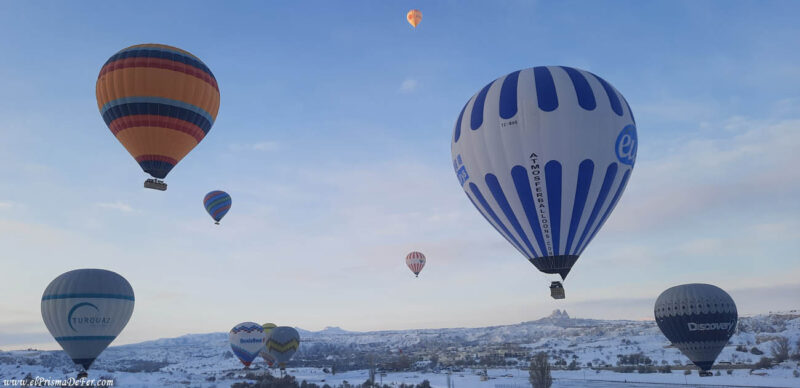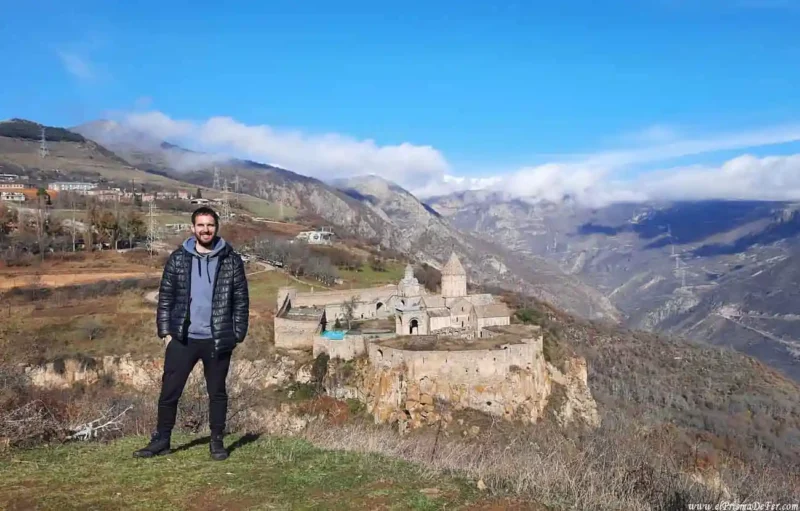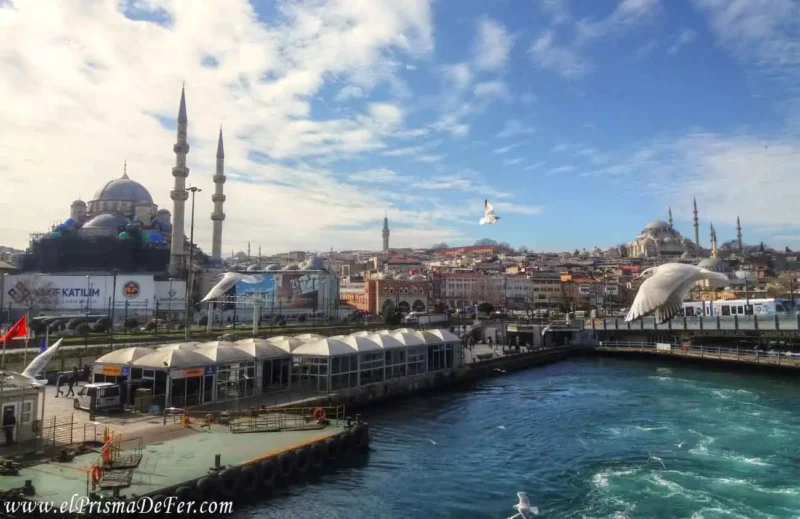Visiting Cappadocia was one of the most epic moments of the entire trip along the Silk Road. It was my first official stop in Türkiye, and just arriving on the bus to this region was like teleporting to another world.
No matter how many photos or videos I've seen of the famous hot air balloons at sunrise, nothing managed to convey what it felt like to be there, walking through those valleys, getting lost among phallic-shaped chimneys, or seeing that sunrise spectacle of balloons floating over the horizon.
In this mega-post, I'll tell you about my experience traveling through one of the most fascinating regions on the planet, along with all the practical information I wish I'd known before going, so you can make the most of your time in Cappadocia.
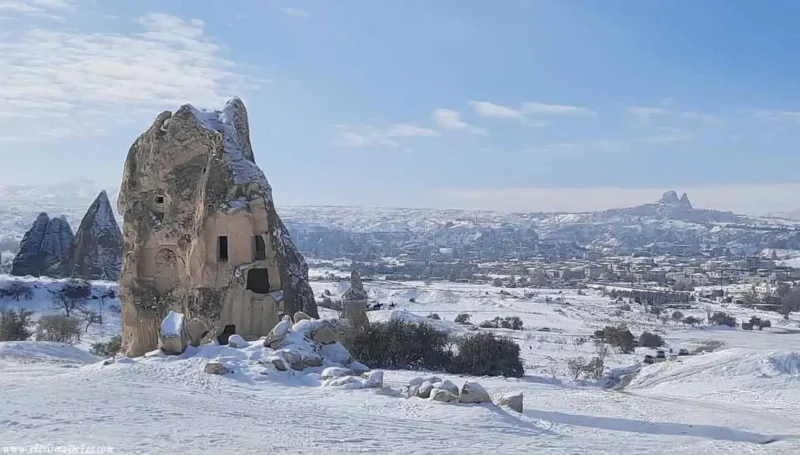

Table of Contents
Where is Cappadocia located?
Cappadocia is located in the heart of Turkey, in the Central Anatolia region, about eight hours by land from Istanbul or four from Ankara. It's not a city per se, but rather a vast region encompassing several valleys, canyons, and villages that seem straight out of another time.
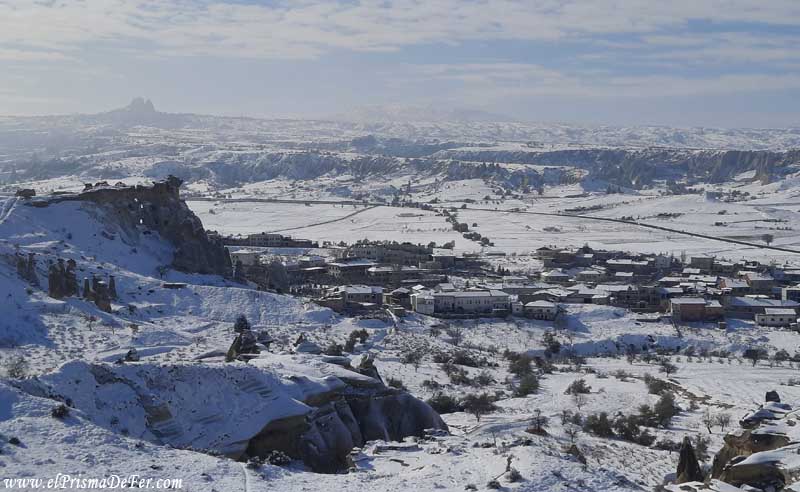
Within the region, there are several towns that serve as a base for exploring the area:
- Göreme: This is the best-known and most touristic, with a wide range of cave hotels, restaurants, and agencies that organize tours and balloon flights.
- Ürgüp: a little more modern and with good transport connections.
- Uçhisar: crowned by an imposing rock castle with one of the best views in all of Cappadocia
- Avanos: famous for its ceramic craftsmanship and peaceful atmosphere on the banks of the Kızılırmak River.
Each one has its own charm and style, and the ideal is to visit several to experience different facets of this magical region.
Arrival in Göreme
I arrived in Göreme after a long journey that included two buses from Batumi, Georgia, crossing Trabzon, until I entered the heart of Cappadocia.
As we entered the region, the landscape began to change completely. These strange and fascinating rock formations appeared on the sides of the road, like the faces of sleeping stone giants, carved by the wind and time.
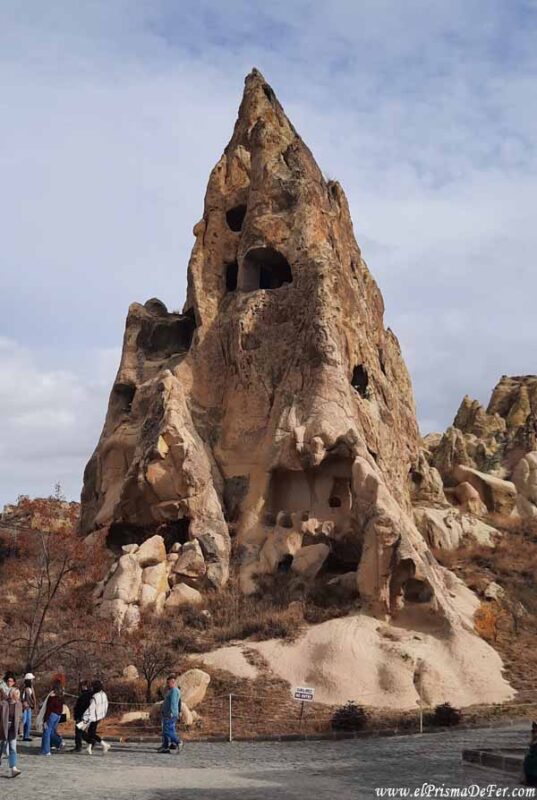
It was a unique setting, which I had only seen a little before when I was in Goris, Armenia, but here it was presented on a completely different scale.
Göreme itself looks like a village straight out of a fairy tale. Its streets wind between rocks and hills, and the shops, cafes, and hotels are embedded directly into the rock formations.
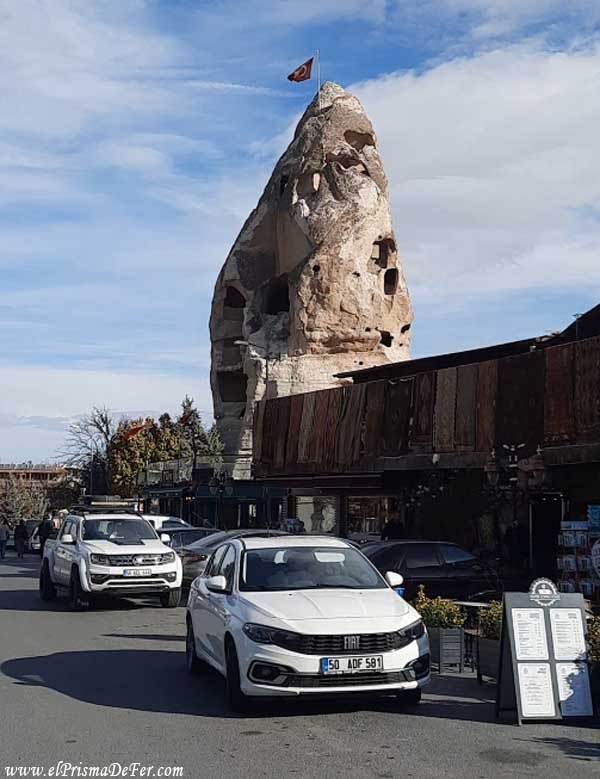
It's true that it's a very touristy place, but it still retains a special magic that makes it unlike any other place I've visited.

The unique geography of Cappadocia
The landscape of Cappadocia seems to be taken from another planet, but its origin has a very earthly explanation.
Millions of years ago, volcanoes in the area covered the entire region with layers of ash, lava, and pumice.
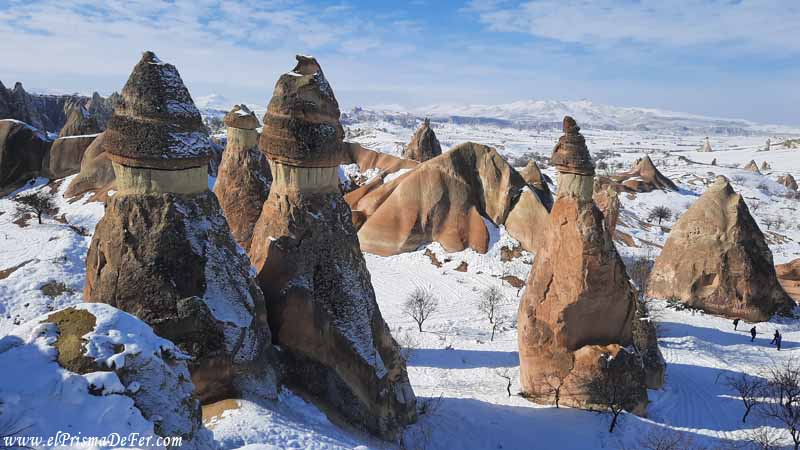
Over time, this ash compacted and formed a soft rock called volcanic tuff, which was then sculpted by wind and rain erosion.
The result was a rolling terrain filled with valleys, natural columns, cones and pointed formations known as fairy chimneys.
This particular geology also allowed ancient inhabitants to take advantage of the softness of the stone to excavate their homes directly into the rock.
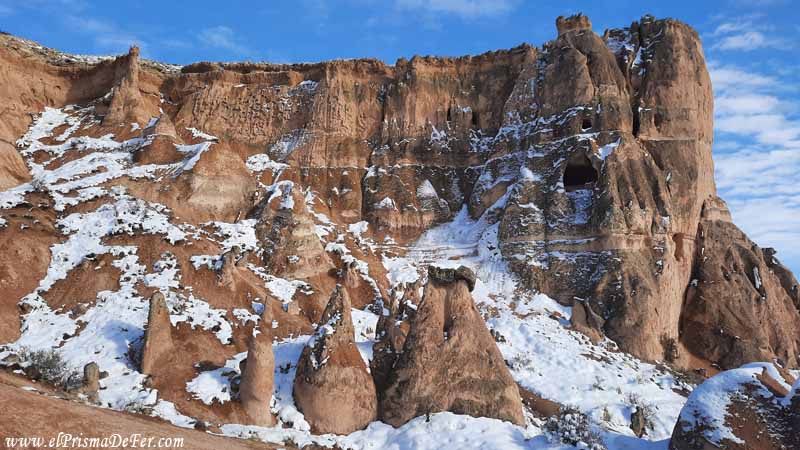
This is how the troglodyte dwellings, the cave monasteries and the underground cities were born, which today are one of the region's greatest attractions.
Cappadocia and its relationship with Christianity
Cappadocia played a key historical role in the early centuries of Christianity. The region was a natural refuge for Christian communities seeking to escape Roman persecution.
The rock formations and deep valleys served as perfect hiding places where churches, monasteries and underground cities were built.
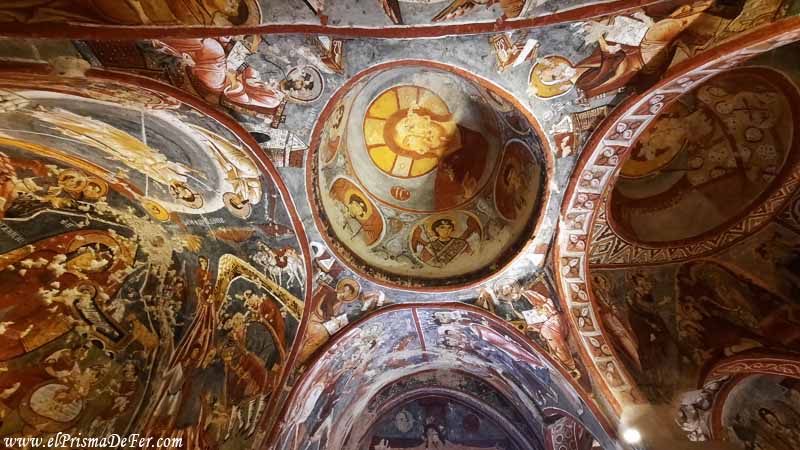
Many of these places can still be visited today, such as the Göreme Open Air Museum or the Derinkuyu Underground City.
The churches are carved into the volcanic rock and contain frescoes dating from the 10th to the 13th centuries, depicting biblical scenes and the lives of saints.
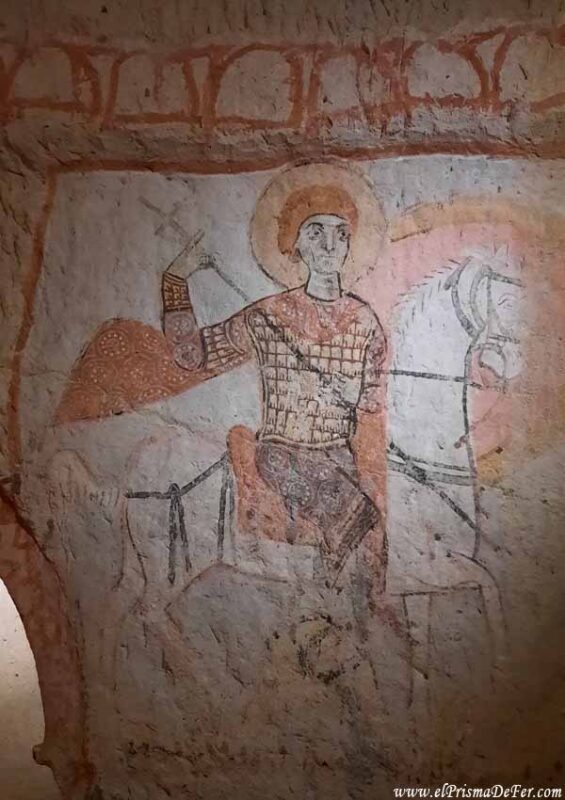
The architecture reflects both the functionality of the hiding places and the creativity and devotion of early Christians.
Furthermore, Cappadocia became a center of learning and spirituality during the Middle Ages, with monasteries training monks and copyists.

How to visit Cappadocia and choose which town to stay in
Something that often causes confusion when planning a trip is that Cappadocia is not a city, but rather a fairly large region in central Turkey, made up of several towns and valleys.
So when you say "I'm going to Cappadocia," you're actually going to one of the small towns that make it up.
Next, I'll tell you about the most famous towns and their particularities:
Göreme
It's the tourist heart of Cappadocia and the most popular spot for travelers. It boasts a strategic location, surrounded by valleys and with easy access to the main points of interest and viewpoints from which to watch the hot air balloons at sunrise.
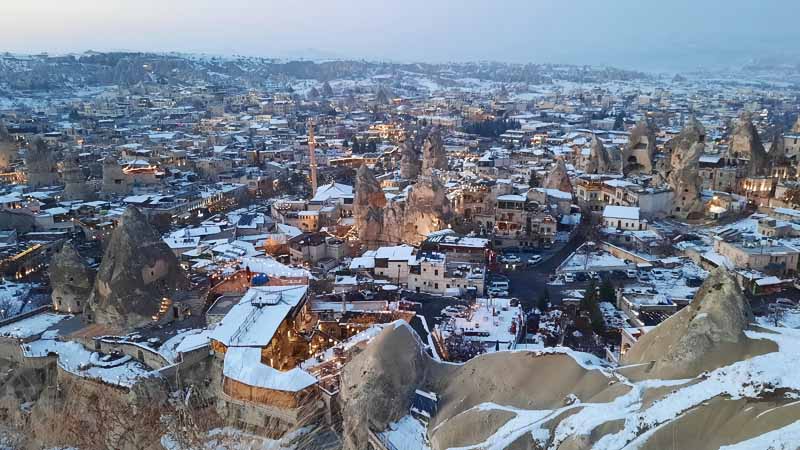
It's the most convenient spot if you want to get around without your own vehicle or book excursions. Plus, most hot air balloon rides, organized tours, and trekking trips depart from here.
- Advantages: Wide range of cave hotels, restaurants, agencies and transportation.
- Disadvantages: It is the most touristy and during high season it can be very crowded.
Where to sleep in Göreme
During my stay in Göreme I stayed at the Goreme Hostel, a simple and unpretentious place, but with good value for money.
It doesn't have the charm of the cave hotels that abound in the region, but it has a classic hostel atmosphere, ideal for meeting other travelers, although I must say that the facilities are somewhat small.
The accommodation itself also operates as a travel agency, and I booked my hot air balloon ride through them at a fairly affordable price, which was a huge advantage.
If you're looking for a more special experience, you can choose to stay in one of the cave hotels that characterize Cappadocia.
Among those with good ratings and reasonable prices are options like Holiday Cave Hotel and Milat Cave Hotel, both with rooms carved into the rock and an atmosphere that truly reflects the magic of the place.
Uçhisar
Located on a hill, it offers the best panoramic views of the region, especially from the famous Uçhisar Castle.
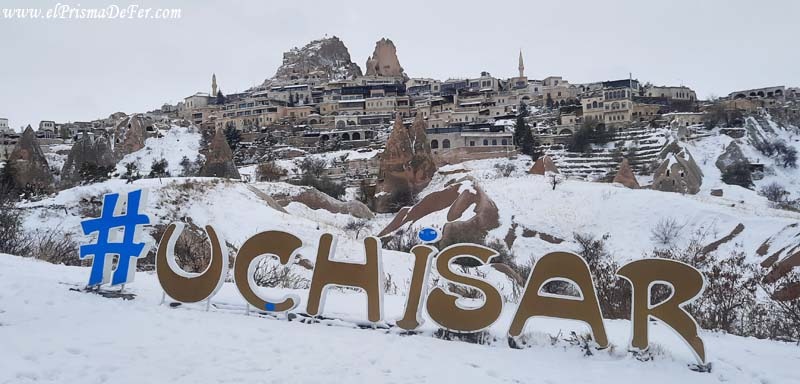
It's a quieter area with beautiful boutique hotels offering terraces with unbeatable views. It's ideal if you're looking for a more relaxed atmosphere.
- Advantages: Stunning views and fewer people.
- Disadvantages: Less nightlife and further from the main valleys.
Ürgüp
It's a slightly larger city with a more local feel. It has good transport links and dining options, and is also a base for tours of the "Red Valley" or the "Valley of the Monks".
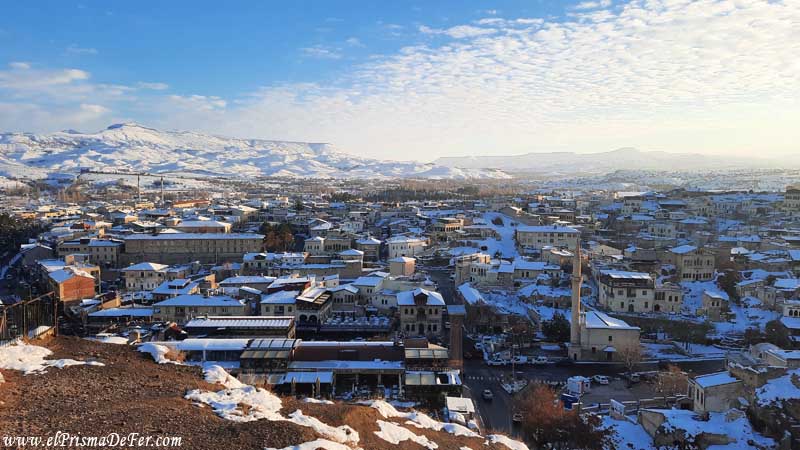
- Advantages: More authentic atmosphere, good accommodation options.
- Disadvantages: Balloons don't usually take off directly from here, so it can be a bit far from the visual epicenter of Cappadocia.
Avanos
Located on the banks of the Kızılırmak River, it is known for its pottery tradition and ceramic workshops. It has a distinct, more artistic and local vibe.
- Advantages: Quiet atmosphere and more affordable prices.
- Disadvantages: It is a little further away from the areas where balloon flights and the main treks take place.
Çavuşin
A small village between Göreme and Avanos, ideal if you want to stay in a very quiet area yet close to everything. It has interesting ruins and trails that start right from the village.
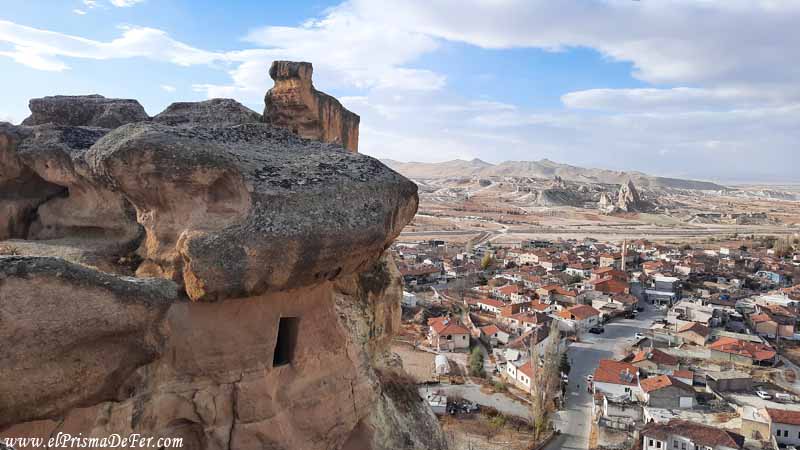
- Advantages: Excellent base for hiking and escaping mass tourism.
- Cons: Limited restaurant and public transportation options.
In short, if it's your first time in Cappadocia, Göreme is the best option due to its location and ease of getting around.
If you're looking for something quieter and less touristy, Uçhisar or Çavuşin are excellent alternatives.
How to get to Cappadocia
Cappadocia is located in central Turkey, far from major cities, but getting there is quite easy thanks to its good air and land connections.
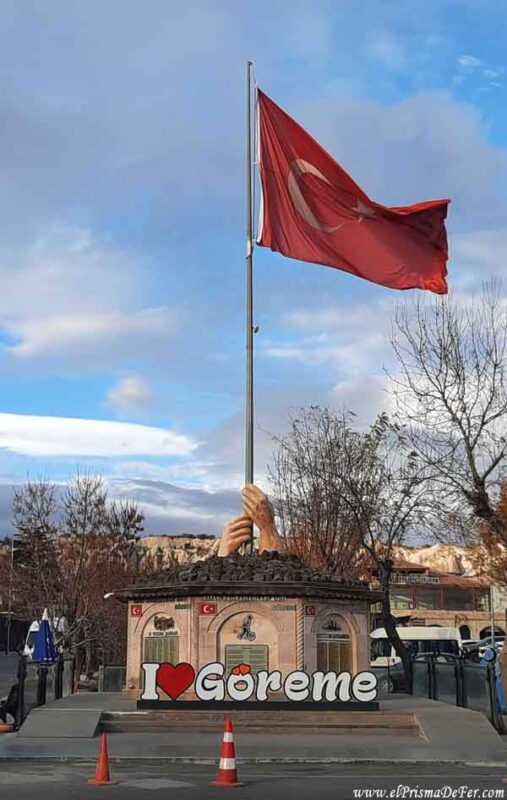
By plane
The region has two main airports: Nevşehir Kapadokya (NAV) and Kayseri Erkilet (ASR), both located less than an hour from the most touristic towns such as Göreme or Ürgüp.
- From Istanbul, there are daily flights to both airports that take approximately 1 hour and 15 minutes.
- From Ankara, the flight is shorter, around 50 minutes, although many travelers prefer to go by land since the distance is not that long.
- There are also direct flights, although less frequent, from Antalya (approximately 1 hour and 10 minutes) and Trabzon (around 1 hour and 30 minutes).
Once at the airport, you can take a shared or private transfer that will take you directly to your accommodation in Göreme or any other town in the area. These usually cost around €10 to €15 per person and will drop you off at the door of your hotel.
There is also the option of taking a private taxi, although the cost is higher (around €30–40, depending on the time and exact destination).
By bus
If you're traveling for longer or want to save money, night buses are a very popular and comfortable option.
- From Istanbul the trip takes between 10 and 12 hours, while from Ankara it takes around 4 to 5 hours.
- From Antalya, the journey is longer, about 9 hours, but the landscapes change radically between the Mediterranean and Central Anatolia.
- If you're coming from Trabzon, the trip can take between 11 and 12 hours, although many travelers choose to make a stop in between.
In all cases, buses usually arrive at the Nevşehir or Göreme terminal, where it is easy to connect with accommodation or book local excursions.
From Nevşehir Bus Terminal, you can take a local minibus (dolmuş) to Göreme, or any of the surrounding villages, which takes about 25–30 minutes and costs much less.

Cappadocia with and without snow
In the photos in the post you will see Cappadocia with and without snow, and that is because during the five days I was there, I had the chance to experience both scenarios.
The first day the weather was sunny, although it was already noticeable in the air that a storm was approaching.
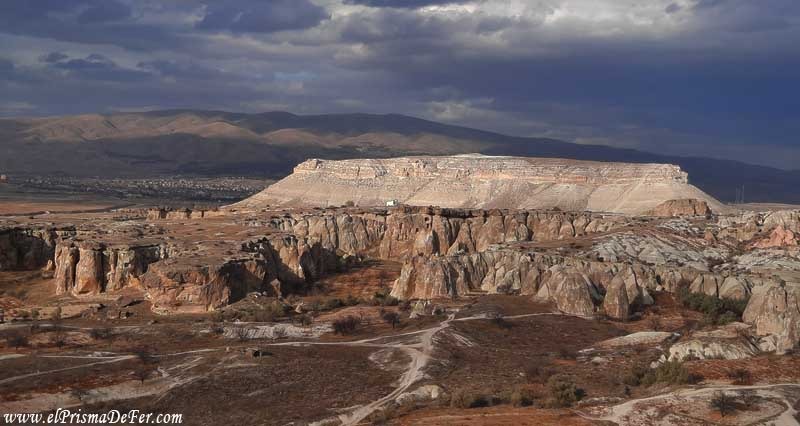
The following days were a mix of heavy snowfall and blizzards, interspersed with calmer moments.
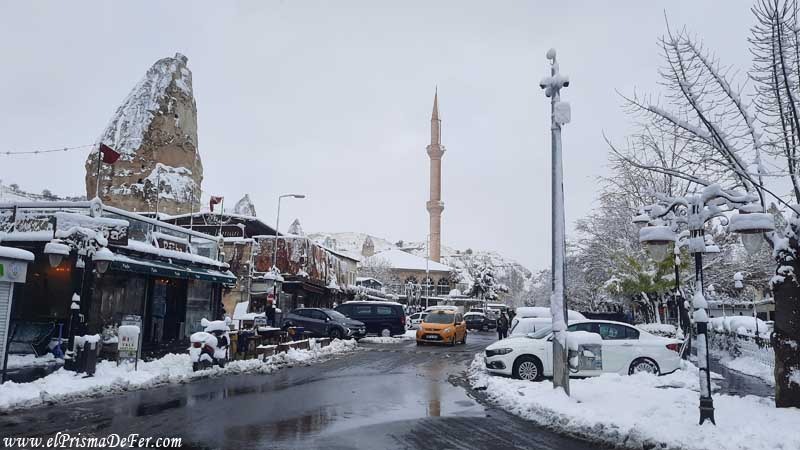
And finally, the last day dawned totally clear, with a blue sky and the entire region covered in white, without a doubt the best landscape I could have seen.
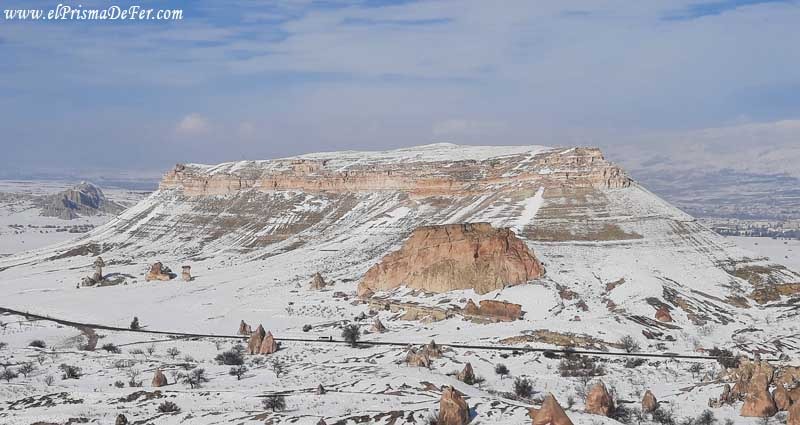
I loved being able to witness such a dramatic change, because it's like experiencing two different Cappadocias on the same trip. It was impossible not to fall in love with the place.
Map with the best attractions in the region
What to see and do in Cappadocia
Although the entire region has a lot to discover, if you base yourself in Göreme, you can visit many of the most iconic places without having to move too far.
From rock-carved museums to otherworldly valleys, Cappadocia offers a unique blend of history, nature, and unforgettable landscapes.
Göreme Open Air Museum
It is, without a doubt, one of the most emblematic sites in all of Cappadocia.
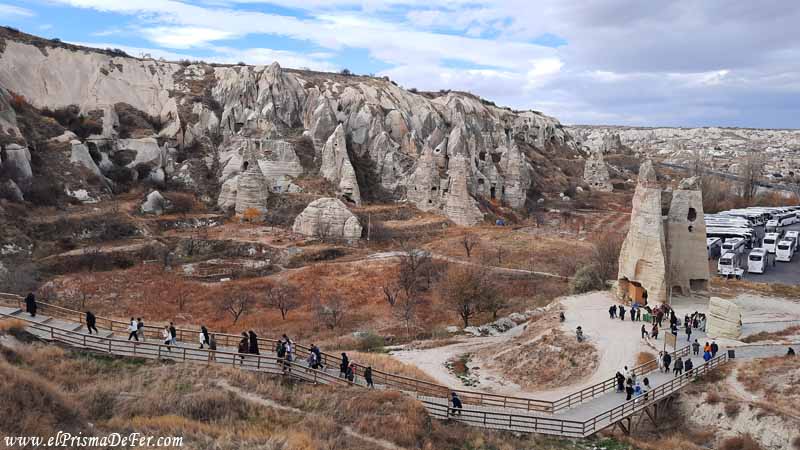
This complex was declared a UNESCO World Heritage Site in 1985 and represents one of the best examples of Byzantine rock art.
It is a group of monasteries, chapels and houses excavated in the rock, many of them with frescoes dating from the 10th to the 12th centuries.
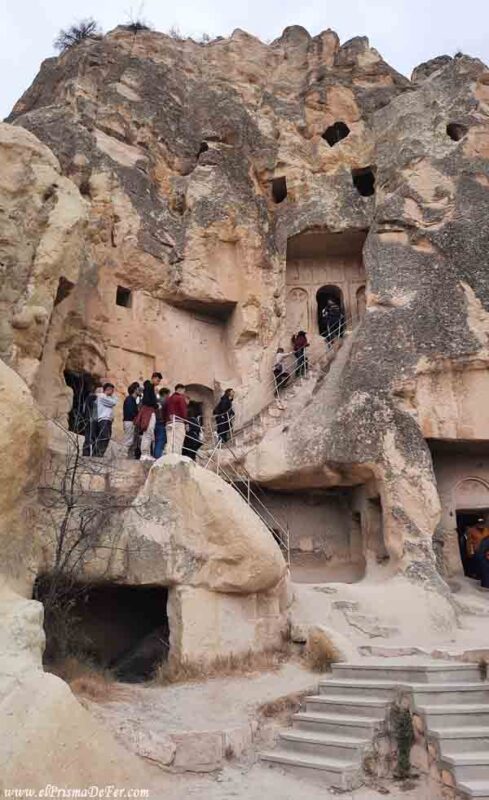
The Dark Church (Karanlık Kilise) is one of the most impressive (it has a separate cost from the general admission), with perfectly preserved frescoes thanks to the lack of direct sunlight.
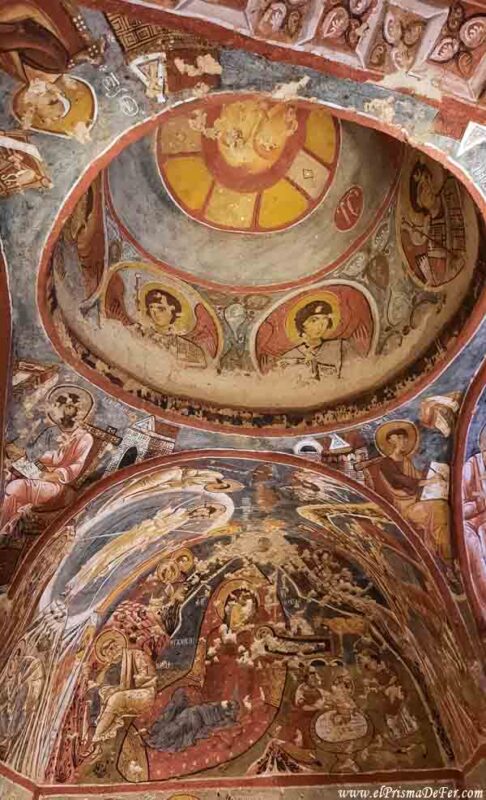
Also noteworthy are the Church of the Apple, the Church of the Snake and the Chapel of Santa Bárbara, among others.
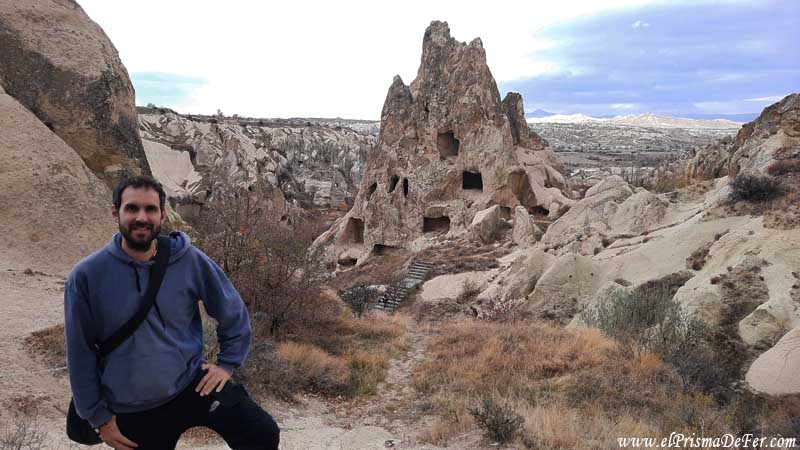
In addition to its historical and artistic value, the surrounding natural environment makes it even more special. From the museum's viewing platforms, you can enjoy spectacular views of the valleys and fairy chimneys.
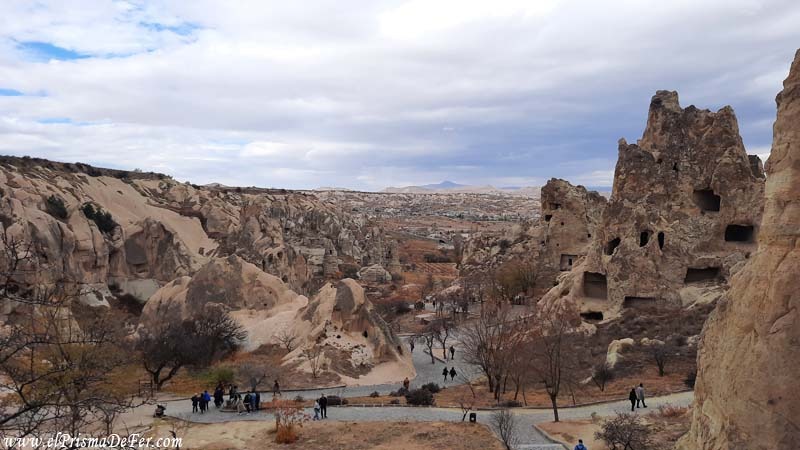
If you go early in the morning, you can enjoy it relatively peacefully before the organized tours arrive.
For the latest prices and visiting hours, you can visit the Museum's official website.
The Underground Cities
These cities were created thousands of years ago, initially by the Hittites, and later expanded by Christian communities seeking refuge from invasions.
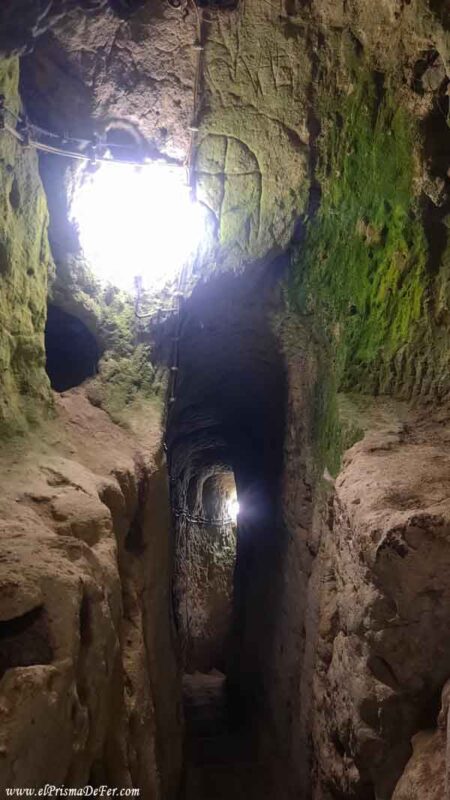
Some reach up to 80 meters deep, with tunnels, narrow passages, ventilation shafts and interconnected rooms.
The most incredible thing is to think that they used to live thousands of people, along with animals and supplies, for long periods of time.
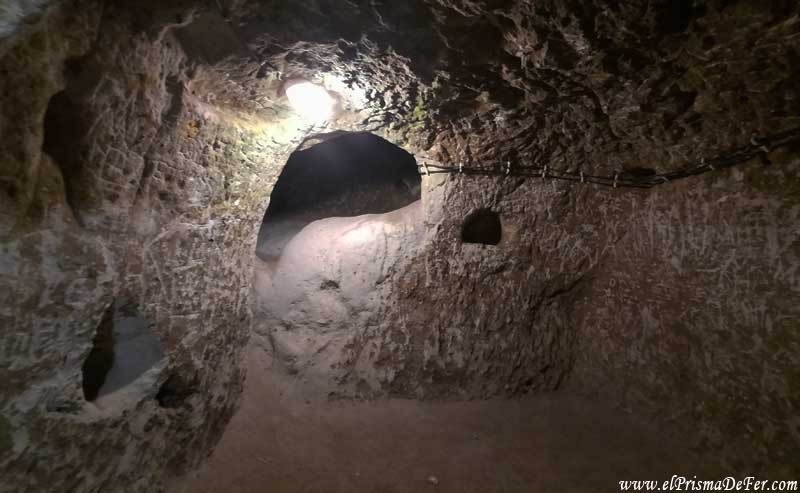
Of the best known, Kaymaklı and Derinkuyu are the most visited, and both can be easily covered on a half-day trip from Göreme.
Derinkuyu: the deepest and most monumental
Derinkuyu is the largest and deepest underground city in Cappadocia, reaching nearly 85 meters underground distributed in at least 8 visitable levels (although it is believed that it could have more).
Its structure is more vertical, with narrow and steep tunnels that connect different floors and sectors, such as churches, cellars, kitchens, stables and even an underground religious school.
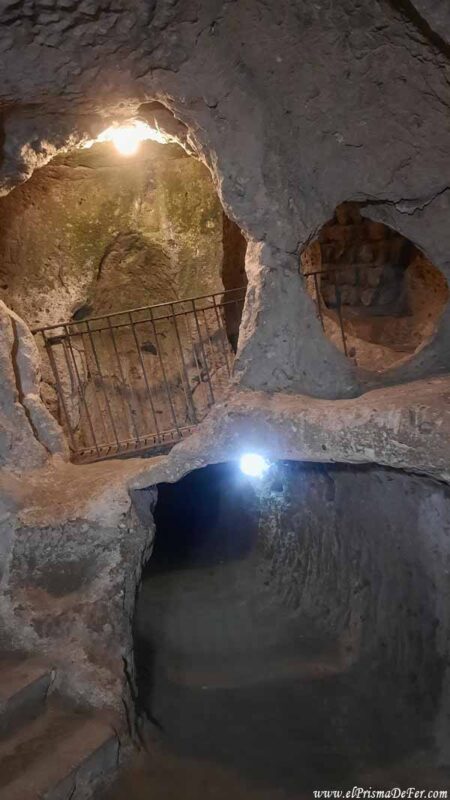
It's advisable to go with a guide, as many areas are similar, and there's no information within the grounds to learn the history behind each structure.
For the latest prices and visiting hours, you can visit the official website of the Derinkuyu Underground City.
Kaymaklı: wider and easier to navigate
Kaymaklı, on the other hand, is shallower but more horizontally extended. Its structure is spread over four levels open to the public, with slightly wider hallways and more airy spaces, making it less oppressive for those who don't feel comfortable in closed spaces.
Here you can see better preserved rooms, areas where wine and oil were stored, and the characteristic stone discs that served to block passageways in case of attack.
The tour is shorter and more accessible, ideal if you want to get a good idea of how these cities worked without going too far down the hill.
How to get to Derinkuyu or Kaymaklı Underground City from Göreme
To get to the Derinkuyu or Kaymaklı Underground City without taking a tour, you need to combine two local means of transport.
First, you need to take a dolmuş (minibus) from Göreme to Nevşehir, which is the largest city and a connecting point between the different towns in the region. These minibuses depart frequently from Göreme Central Station and the journey takes approximately 20 to 25 minutes.
Once in Nevşehir, you will need to change buses and take another local bus to Derinkuyu or Kaymaklı, which are located about 30 km south.
The trip takes around 40 minutes, depending on traffic and stops. These buses usually depart every hour, so it's a good idea to check the schedule at the station or plan ahead to avoid long waits.
Upon arrival, the stop drops you off practically in the center of town, just a few meters from the entrance to the underground city.
Hiking through the valleys
If anything surprised me about Cappadocia, besides the famous hot air balloon ride, it's the number of trails to explore in the surrounding area. Yes, Cappadocia is a trekking paradise.
The region is full of stunning valleys, interconnected and perfect for exploring on foot, without a vehicle. Add to that the snow, as I was fortunate enough to see during my visit, and the landscape becomes almost magical, like something out of a fantasy story.
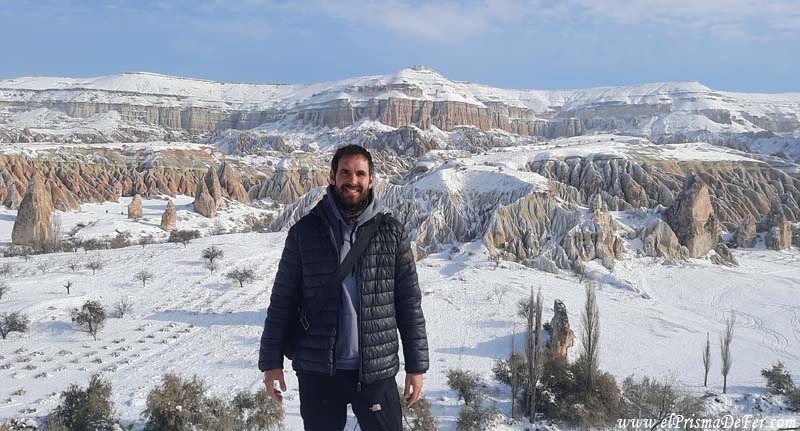
Some of the most popular and photogenic trails start from Göreme, with rock formations of pink, ochre, and gold hues that change depending on the time of day.
Among the most recommended are the Red Valley (Kızılçukur) and the Rose Valley (Güllüdere), especially to do at sunset.
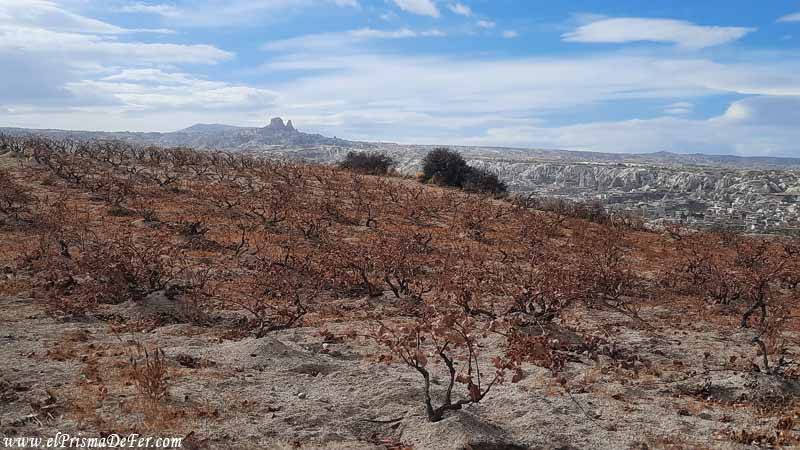
Also worth a visit are Love Valley, famous for its curious phallic-shaped fairy chimneys, or Pigeon Valley, which connects Göreme with Uçhisar and offers picture-postcard panoramic views.
In another post, I'll go into more detail about each route, with maps and recommendations for doing it on your own.
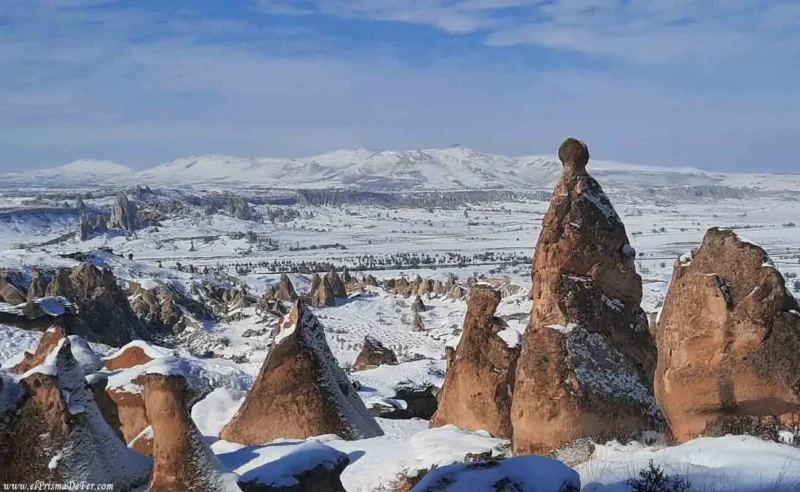
Hiking in Cappadocia (coming soon)
The balloon flight
Cappadocia is one of the few places in the world where balloon flights are part of everyday life. Seeing hundreds of balloons rising at dawn over the valleys is a picture that will stay with you forever.
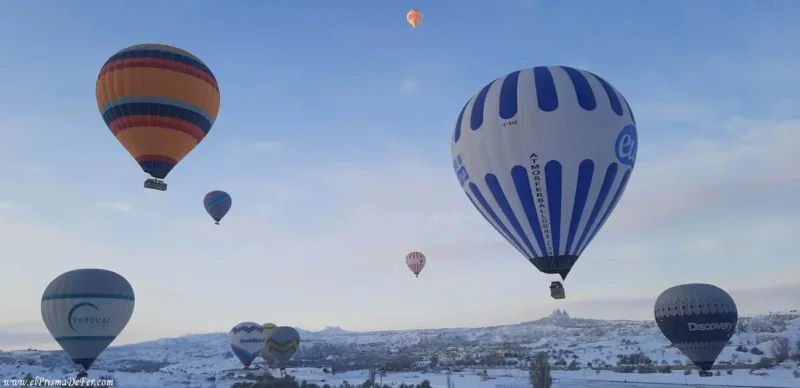
The flight usually lasts about an hour and takes place at dawn, when the winds are more stable. From above, the landscape is simply surreal: the fairy chimneys, valleys, and villages create an unforgettable visual experience.
Although it is not cheap, it is an experience that is truly worth doing once in a lifetime.
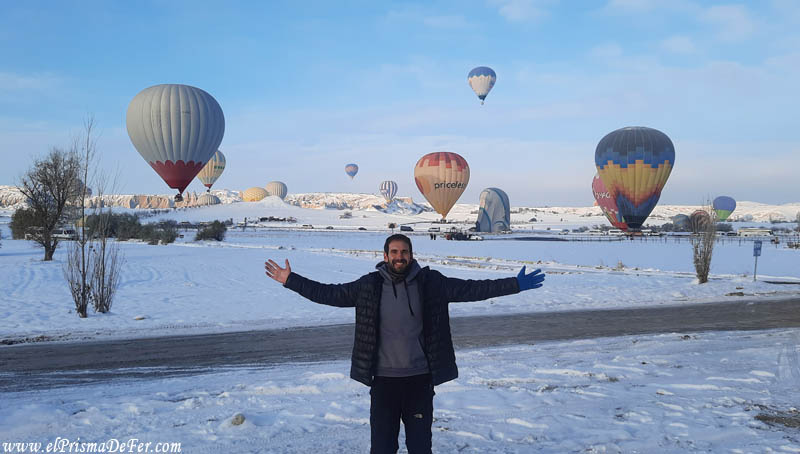
I was lucky enough to do it after a snowfall, after several days of being canceled due to bad weather.
I could see the entire landscape covered in white. It was one of the most epic moments of the entire trip, and so it deserves to be covered in another post.
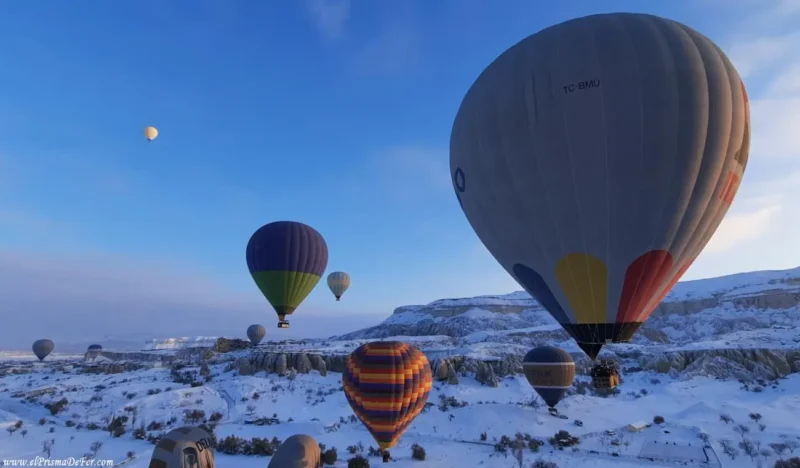
Vuelo en Globo en Capadocia, todo lo que debes saber antes de ir
Uçhisar Castle
Visible from almost any point in Göreme, Uçhisar Castle is a huge rock formation pierced with tunnels, passageways and chambers dating back to the Byzantine period.
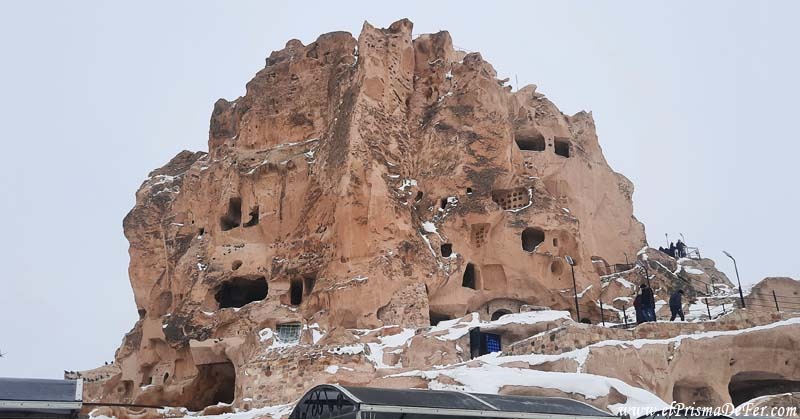
It was a strategic point due to its location, since the entire valley can be seen from the top.
From the summit, you'll have panoramic views of Pigeon Valley, Red Valley, and Göreme itself. If you go in winter and the landscape is covered in snow, the contrast with the rocks is magical.
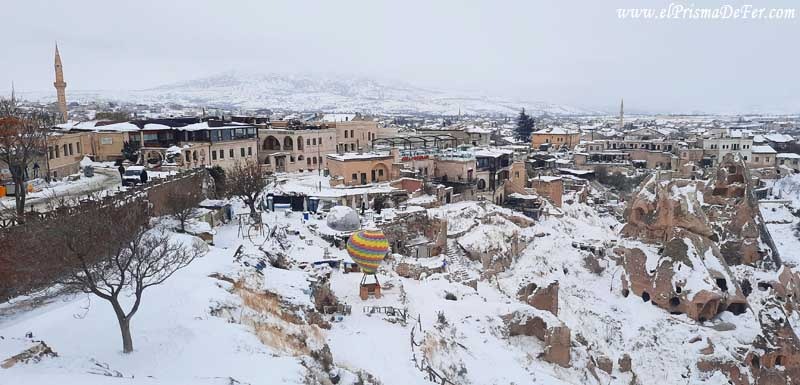
Çavuşin Castle and Church
A few kilometers from Göreme is the village of Çavuşin, one of the oldest in the region. Its partially collapsed rock castle still retains a mysterious air and offers excellent views of the surrounding valleys.
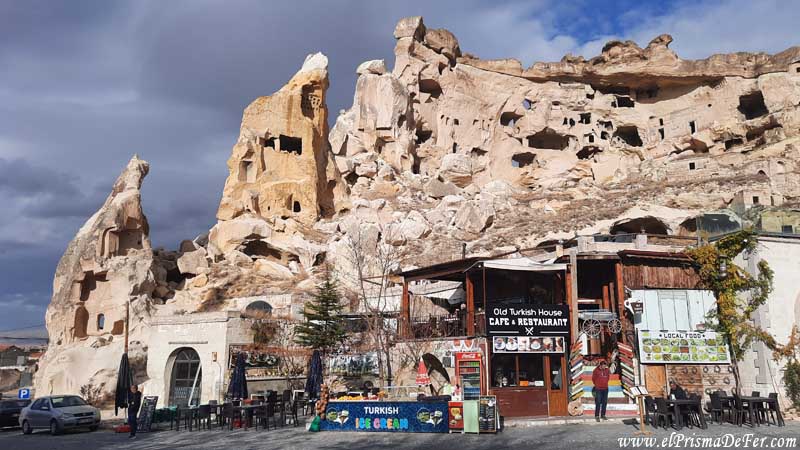
But the most interesting thing about the place is the Church of St. John the Baptist, one of the largest rock-hewn churches in all of Cappadocia.
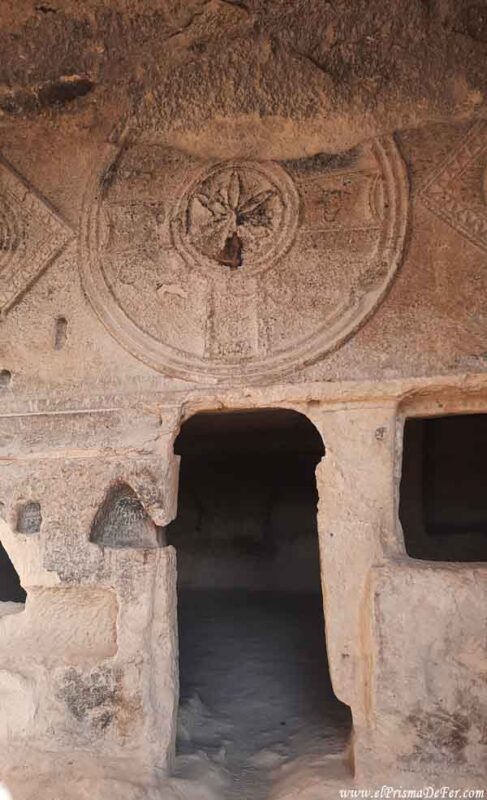
Dating back to the 5th century, it is believed to have been an important religious center. Although the access can be somewhat steep, it is absolutely worth it for its frescoes and almost mystical atmosphere.
Valley of the Monks or Fairy Chimneys
Another of the most impressive places I visited in Cappadocia was the Valley of the Monks. It's one of the best places to get a close look at the famous fairy chimneys, those phallic-shaped stone columns that rise abruptly from the ground.
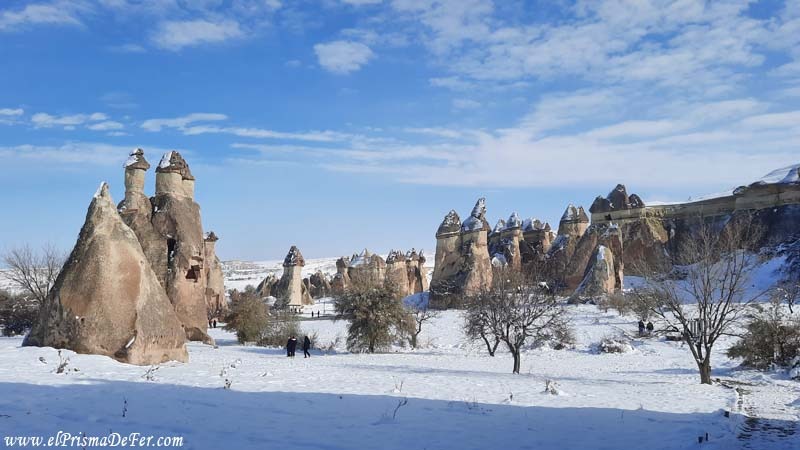
Some have small caves dug out, others rise more than ten meters and change color with the daylight.
The place is easy to explore on foot and is full of photogenic spots, but you have to pay an entrance fee and it's usually quite crowded.
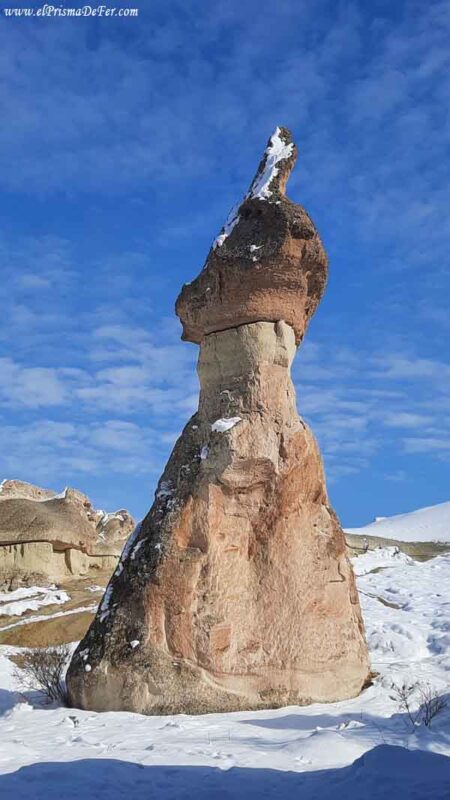
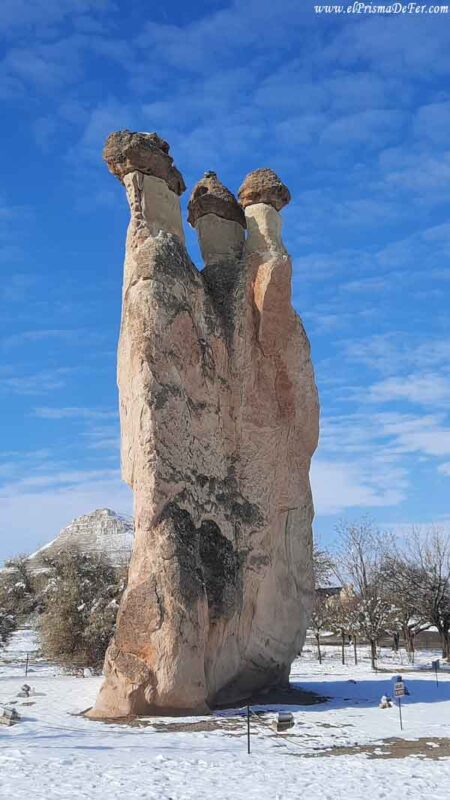
For updated prices and visiting hours, you can visit the official Monks Valley website.
Although if you read the post about trekking in Cappadocia, I'll tell you how you can get in without paying anything :D.
Imagination Valley or Devrent Valley
A less visited and free place is the Devrent Valley, also known as the Valley of Imagination.
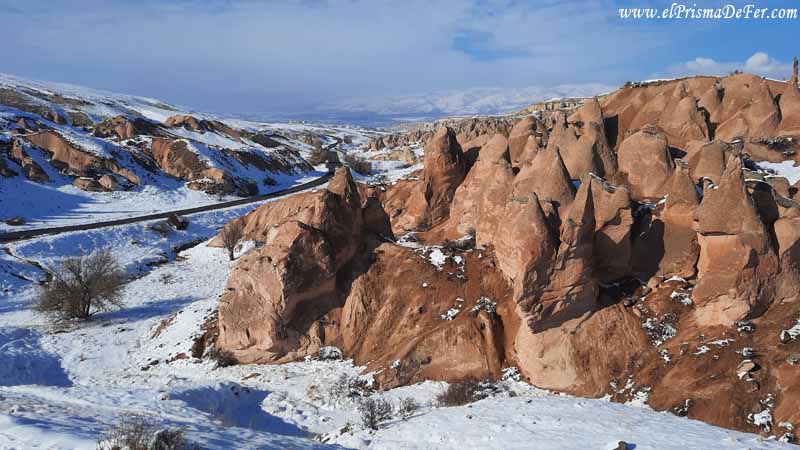
Unlike other places in Cappadocia, there are no churches or houses carved into the rock here; what attracts visitors are the natural formations with curious shapes, shaped by erosion.
As you walk among the stones, you begin to make out figures that look like animals or creatures: the most famous is the stone camel, but if you look closely, you can also see shapes reminiscent of seals, snakes, or even people.
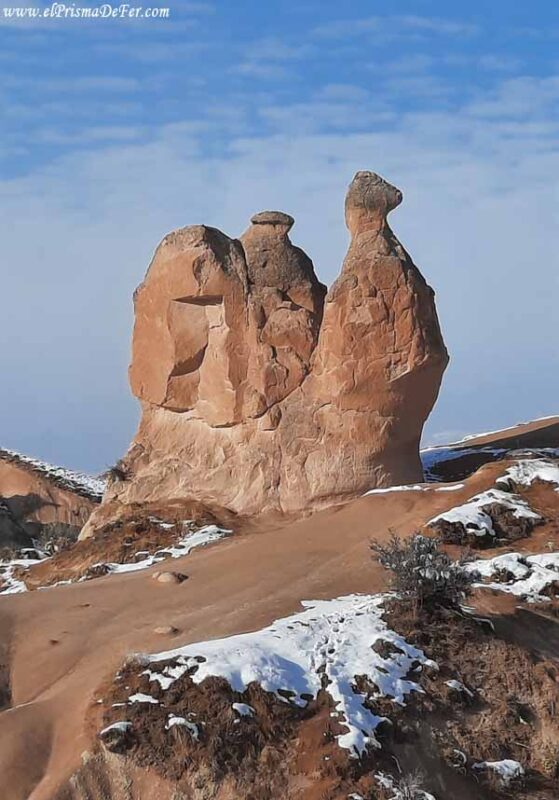
It's a place to let your imagination run wild and enjoy the scenery without rushing.
Being further away from the rest of the attractions, this valley isn't as visited as the Valley of the Monks, for example. This gives it another charm, because you can find yourself alone in this special place.
The best viewpoints in Göreme
If you want to enjoy the best views of the balloons at sunrise, the most famous spot is the Sunset View Point (see on map), located a few minutes' walk from the center of Göreme.
Despite its name, it's equally popular at sunrise and sunset. From there, you have a privileged view of the entire valley and the balloons taking off.
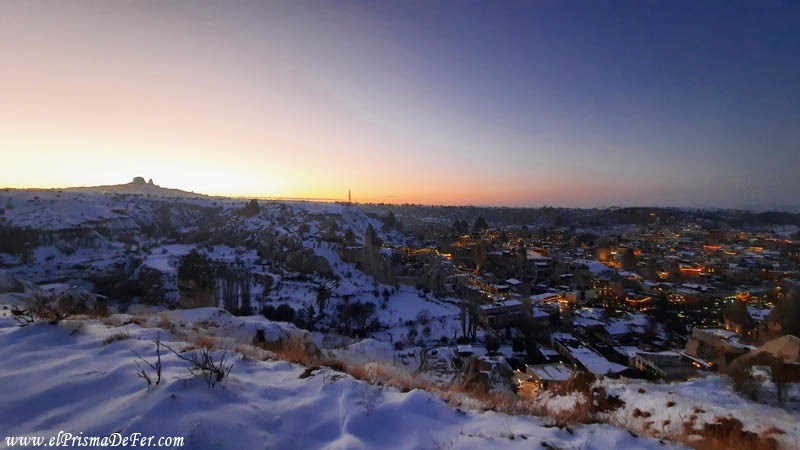
Another recommended spot is Lover’s Hill, a slightly higher viewpoint that also offers panoramic views of the village and surrounding valleys.
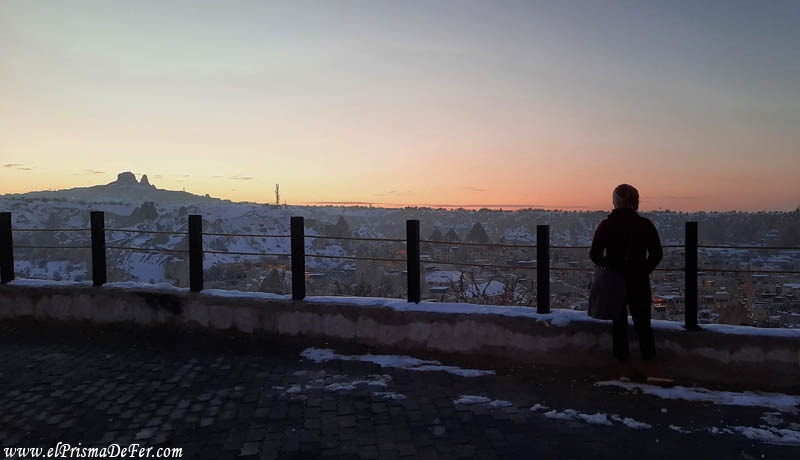
Both are ideal places to enjoy the scenery without paying admission, especially if you want to take spectacular photos without getting into the balloon.
Cappadocia Tours: Red and Green Circuits
For those who prefer to organize their visit with a guide or simply want to make the most of their time, tours are a very popular option in Cappadocia.
Most local agencies offer different tours that combine history, nature and towns in the region, the best known being the Red Tour and the Green Tour.
Red Tour
The Red Circuit usually focuses on the northern part of Cappadocia, visiting the valleys near Göreme, such as the Rose Valley and the Red Valley, as well as villages such as Çavuşin and Uçhisar.
It includes stops at panoramic viewpoints, open-air museums, and some iconic castles or rock formations.
This tour is ideal for those who want to explore geological formations and take short hikes without straying too far from the main towns.
Green Tour
The Green Circuit covers the southern and largest part of the region, including visits to the underground cities, the Ihlara Valley, and some ancient monasteries and churches.
Due to the greater distances, this tour usually requires more transportation time, but it allows you to visit less crowded places and enjoy more varied landscapes.
Both tours can be combined with hikes, local tastings, or strategic photo stops, depending on the agency.
Booking a tour makes getting around easier if you don't have your own car and allows you to learn about historical and cultural details that might be missed when traveling on your own.
What to do in the village of Göreme
The village of Göreme itself has its own charm: cobblestone streets, restaurants carved into the rock, terraces with views, and craft shops where you can buy traditional carpets, lamps, and ceramics.
One of the most popular activities is the ATV tour, which usually takes place at sunset and passes through Red Valley, Love Valley and other areas full of curious formations.
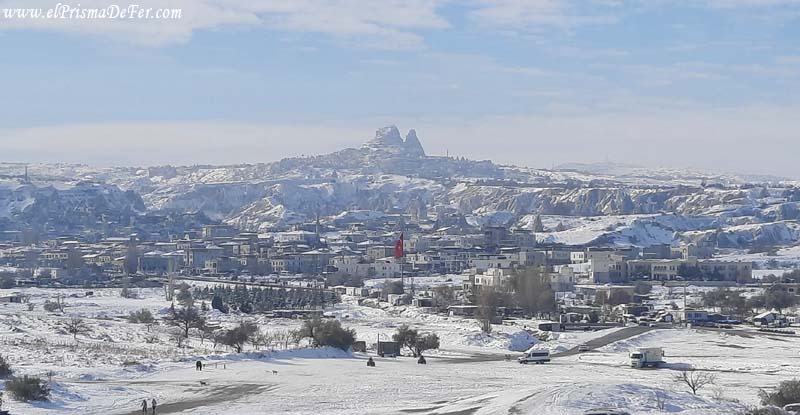
Another very photogenic option is to rent ride in vintage convertible cars, which you can rent with a driver to watch the sunrise while the balloons are in the air. It's more of a touristy experience, but if you like photography, it can be a great addition.
There are also sunset horseback rides, in reference to the region's name (Kapadokya means “land of beautiful horses”).
And if you want to relax after all that walking, Göreme has several hamams (Turkish baths) where you can try a traditional session.
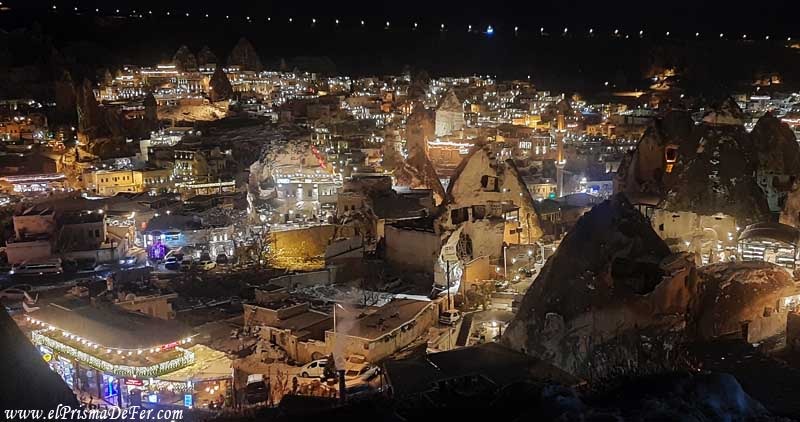
At night, when the town lights up and the cave hotels seem to light up like lanterns, the atmosphere changes.
There are quiet bars where you can sip local wine or Turkish tea while overlooking the valley.

How to get around Göreme and the surrounding villages
If you are staying in Göreme, most nearby towns are accessible by dolmuş (local minibuses), taxis, shared shuttles, or rental car.
dolmuş depart frequently from Göreme Central Station (see on map) and connect to towns such as Uçhisar, Avanos or Çavuşin, making it a cheap and reliable option for those travelling on their own.
Renting a car is still a great option if you want complete freedom to explore the valleys, churches, and viewpoints at your own pace.
The distances between villages are not long: from Göreme to Uçhisar it is just 10 minutes, to Avanos 15-20 minutes and to Çavuşin 5-10 minutes.
There are also local tours that cover the main points of interest and towns, ideal if you prefer not to drive and have a guide explain the history and interesting facts about each place.
Best time to visit Cappadocia
Cappadocia is a year-round destination, but the experience changes dramatically depending on the season.
Spring (April to June) and autumn (September to October) are generally considered the best times to visit: the weather is mild, the skies are clear, and the landscape shines with vivid colors.
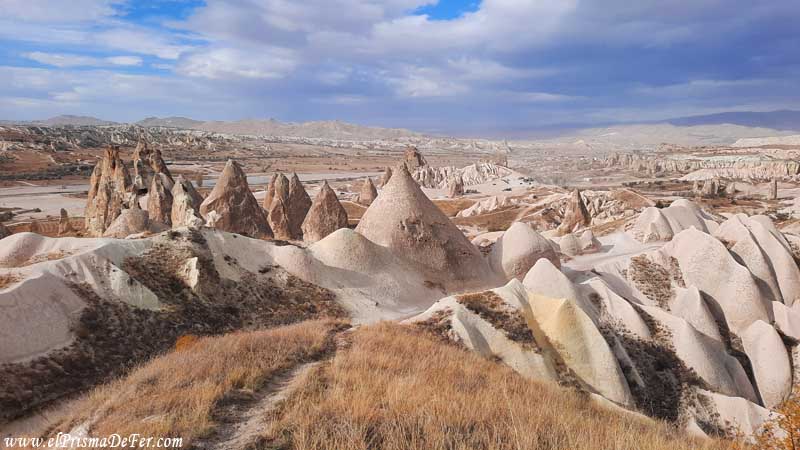
Summer (July and August), on the other hand, can be very hot, especially at midday, although it remains a popular season for those who don't mind crowds.
In winter the region becomes quieter, but it is often very cold. The advantage is that accommodation and balloon flight prices are considerably lower.
And what really makes a winter trip to Cappadocia worthwhile is the chance to see it covered in snow: a surreal, almost dreamlike version of its usual desert tones.
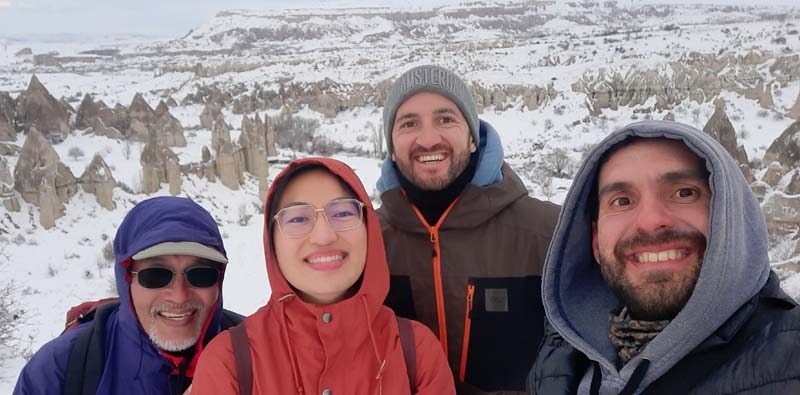
When I went in December, I arrived just before a snowstorm hit, so I was able to see how the landscape transformed overnight.
How many days to stay in Cappadocia
The ideal length of stay in Cappadocia depends on how much you want to explore and the weather conditions.
I was there for 5 days, although part of that time was limited by snow and storms. Still, I managed to explore several valleys, visit open-air museums, and go trekking in the surrounding area.
Therefore, I recommend allowing at least 4 full days to be able to enjoy the region at a leisurely pace and adapt to possible weather changes.
An important factor to consider is the balloon ride. Flights are easily canceled due to any adverse conditions, even light winds. If you only plan to do the balloon ride for 1 or 2 days, you run a high risk of it being canceled.
Spending several days in Cappadocia increases the likelihood that you'll be able to fly and take advantage of all the region's activities without feeling rushed.
Final thoughts
Cappadocia surprised me a lot. Before coming, I thought its fame was almost exclusively due to the hot air balloon rides, which are also quite expensive, so I didn't have too many expectations beyond that.
But when I arrived, I found a place completely different from what I imagined: landscapes from another planet, incredible valleys to explore on foot, and a very special mystique that can be felt in every corner.
It was, without a doubt, one of my favorite places in Turkey. There's so much to see and do that even without getting on the balloon, the visit is unforgettable.
I recommend coming early, staying for several days, and simply letting yourself be carried away by the paths and rock formations.
Support The Prism of Fer!
Your support helps me continue creating free content on the blog. Thank you so much!


